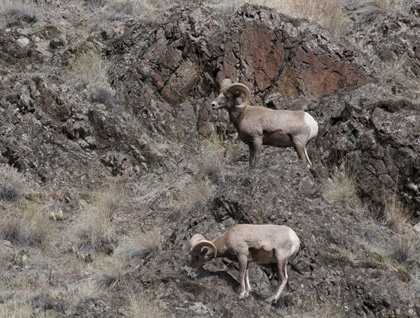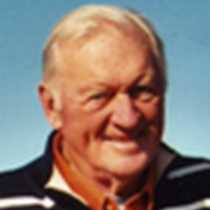Fall colors, Chinook fishers, and sheltering Palouse hills greeted guests this morning. By 8:30 a.m. a motor coach was on its way up the Clearwater River (Kos-Kos-Kee in Nez Perce) to let guests replicate the 1805-1806 campsites and water paths of the Lewis & Clark Corps of Discovery. At 9:00 a.m. another contingent of guests boarded jet boats for a ride into the northern reaches of fabled Hells Canyon.
Jet boaters cruised by some of the region’s more spectacular basalt walls and saw evidence of the one-time Pacific Ocean shore. Moving upriver, the boats passed the town of Asotin, Washington, named for eels—a favorite Native American dish—found in the nearby rivers and creeks. Other settlements consist of vacation homes facing the Snake River bank on sandy beaches. Besides an assortment of riverside bushes and trees, including Russian olive, guests glimpsed wild turkeys and nimble Bighorn sheep. Evidence of ancient human activity was seen in petroglyphs and pictographs displayed on basalt. After lunch the boats turned around at the mouth of the Salmon River, known as the “River of No Return.”
The Lewis & Clark group followed Idaho State Highway 12 to visit Corps campsites and learn from a local guide about the early close relationship between expedition members and the Nez Perce people (Nimiipuu, in the local language). Among the many Clearwater River and box canyon stops, Colter’s Creek was identified. Also, Treaty Council on Lawyer’s Creek; Kamiah Crossing Camp, where guests learned about river travel and foraging for food; Long Camp, known as Camp Chopunish; Canoe Camp, where the Corps made dugout canoes from large Ponderosa pine trees; and Fishing Island, a favorite site of the Nez Perce Chief Twisted Hair.
A number of guests stopped for a tour of the Nez Perce National Historical Park Visitor Center at Spalding, Idaho. Evening Recap and the evening presentation included comments about local human, animal, and geological features, and history.









